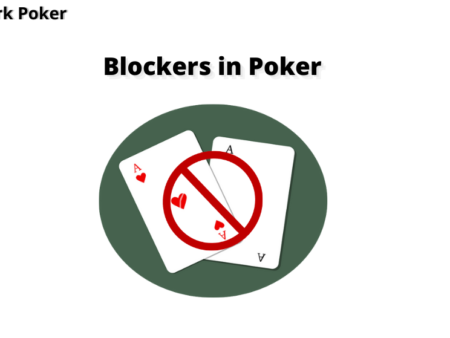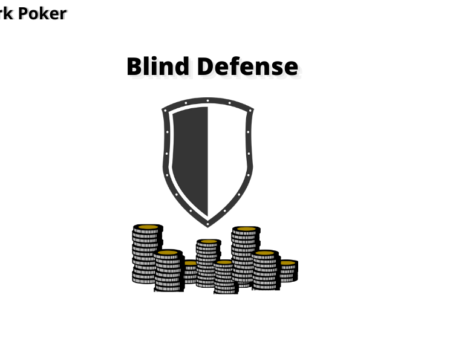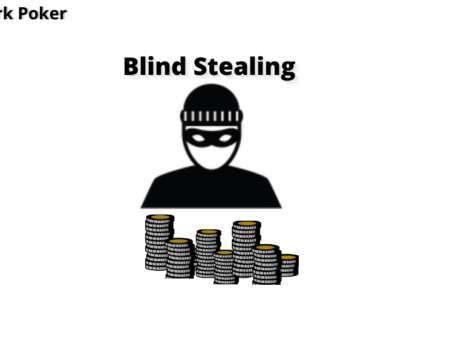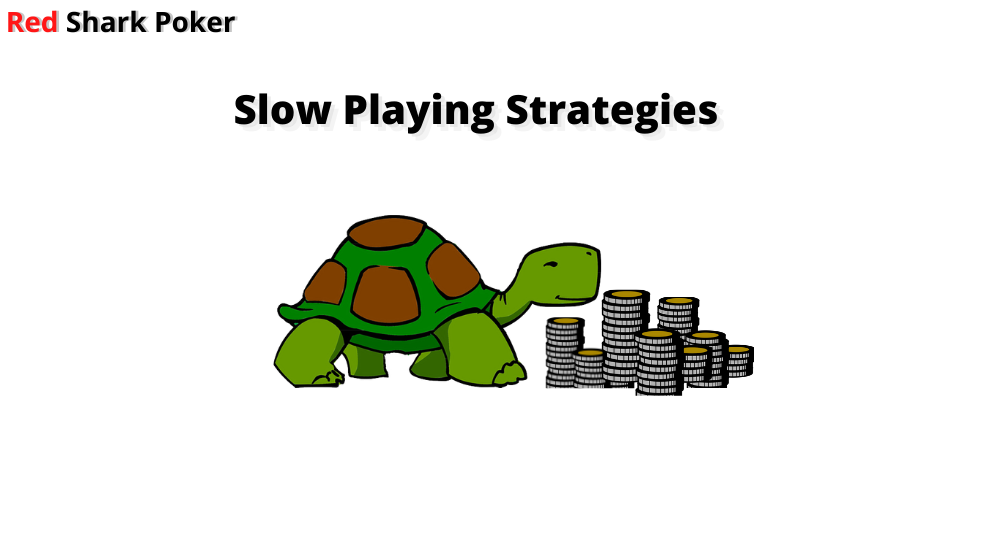
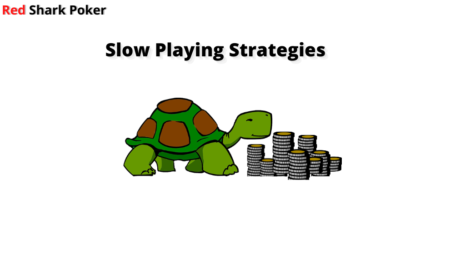
Slowplay in poker is an act of deception used to hide the strength of your hand by checking and/or calling to make your hand seem weak. This form of passive play induces your opponent to bet aggressively and build the pot. You try to convince your opponent that you don’t have a strong hand and allow him to continue betting or raising. You hope that your opponent makes big bluffs on the later streets, or if he checks, you make a big bet making it seem like a bluff and make him call.
An Example of Slow play in Poker
Let’s look at an example to understand slow play in poker.
Your Hand: 9♦ 9♣
Flop: 9♠ K♣ 2♦
Here you have a set of nines, which you can slowplay by checking and inducing your opponent to bet. If your opponent chooses to bet, you can simply call to build the pot. If he has hit a pair of kings, you still have a better hand; and, if he is bluffing, you can allow him to continue bluffing by checking on the next street.
Should You Slowplay in Poker?
Most of the expert players do not recommend slowplaying due to two major problems:
- You allow your opponent to improve his hand by just checking or calling. If your opponent completes his draw, your hand will not be the strongest anymore.
- You miss the opportunities to extract value and grow the pot. If you check and your opponent checks behind, you miss out on extracting value for one entire street.
However, there are certain situations where slowplaying can be profitable. Let’s look at when and against whom you should slowplay in poker.
When to Slowplay in Poker
Slowplay on boards that don’t help your opponent to improve his hand. The best boards to slowplay would be dry and non-coordinated boards that don’t have flush or straight draws. For example,
Your Hand: 9♦ 9♣
Flop: 9♠ K♣ 2♦
The flop doesn’t have two cards of the same suit and connected cards. There is no possibility for your opponent to complete his draw on the turn. So, you can slow play on such boards that don’t allow your opponent to improve his hand.
Your Hand: 5♦ A♣
Flop: 5♠ 5♣ Q♦
You have hit trips on the flop. If you bet here, your opponent might probably fold. So, you can slowplay here and induce your opponent to bet. If your opponent checks as well, you can give him a free card that doesn’t complete any immediate draw.
Against Whom Should You Slow Play in Poker?
The main objective of slowplaying in poker is to induce your opponent to bet. So, look out for loose-aggressive players who show a lot of post-flop aggression. Such players often try to bluff and steal the pot. When you slow play, you set up a trap by allowing them to bet aggressively.
Against Whom Should You NOT Slowplay?
Loose-passive players (fish) who usually tend to call most of the bets do not take the initiative. Against such players, it is better to value bet and build the pot. If you have the best hand on a dry and uncoordinated board, it is better to value bet and build the pot. If you check, a fish will also check behind, and you will lose a betting round.
When Not to Slow Play in Poker?
You should not slowplay on wet boards that could improve your opponent’s draws on later streets. Expert players with draws often semi-bluff on wet boards, hoping that you would fold. As they still have outs that can help them later, it is better to re-raise and force them to fold. The worst mistake would be to check and give a free card that could potentially complete your opponent’s draw. Let’s look at an example.
Your Hand: Q♦ Q♣
Flop: Q♠ 5♣ 6♣
You have hit a set on the flop. However, there are two suited connectors on the flop as well. Your opponent might be having a flush or straight draw. If you check and your opponent checks behind, you are allowing your opponent to improve his hand by giving a free card. Make a 3/4 to full pot-size bet to give tough pot odds to your opponent if he is holding a drawing hand. In case your opponent calls and misses his draw, you still get to win a big pot.
Also, learn: What is a Free Card in Poker?
Conclusion
The success of the slowplay in poker depends entirely on how your opponent is going to react to your passive play. Have a good read on your opponent and slowplay when you are confident of your opponent betting. If your opponent checks behind, you miss an entire betting round. Most of the expert players will understand what you are trying to achieve and simply check to deny you value. Be critical of the board texture, and don’t slowplay to allow your opponents to complete their draws. Slowplaying is sweet only when the profit is good. Good Luck!

